
Envisioning your perfect home in your property search can be a process that is full of inspiration and fun, however, it is key to remember that looks can often be deceiving. There needs to be more than just looking up pictures of a property to break down the different dimensions and aspects of the place.
This is where floor plans come in.
Understanding how to read a floor plan is an essential skill for anyone making their way through the real estate market in Singapore. As the city hosts a diverse property market where a wide range of properties such as HDB flats, condominiums, apartments and landed homes are prevalent, interpreting a floor plan can provide valuable insights about a property’s design, functionality and layout.
In this guide, we go over the process of deciphering floor plans, highlighting the key elements that form one, and breaking down the different signs and symbols that can help you interpret every floor plan you can find in Singapore.
What is a Floor Plan?
A floor plan refers to a detailed, scaled diagram that provides a top-down view of a property, covering its layout and spatial arrangement of all the areas within the property. The floor plan illustrates all the rooms, living areas, walls, furniture, and the various key features of a building or specific unit within a development.
Floor plans are essential throughout the process of buying, selling, renting and designing any property as they provide a visual representation of the place’s flow, functionality, measurements and dimensions. The floor plan is generally the first point of consideration if it matches the layout requirements of each individual, to cater to the ideal functionality envisioned.
Floor Plan Legend
The legend of a floor plan serves as a reference guide for users, and it provides a detailed explanation for each of the symbols, abbreviations, icons and the various visual elements found in a floor plan. Generally, newer developments have more detailed floor plans which makes it easier to get the information first hand. Older developments may require further exploration with the development’s MCST or BCA (Building & Construction Authority) to procure the detailed drawings.
Walls
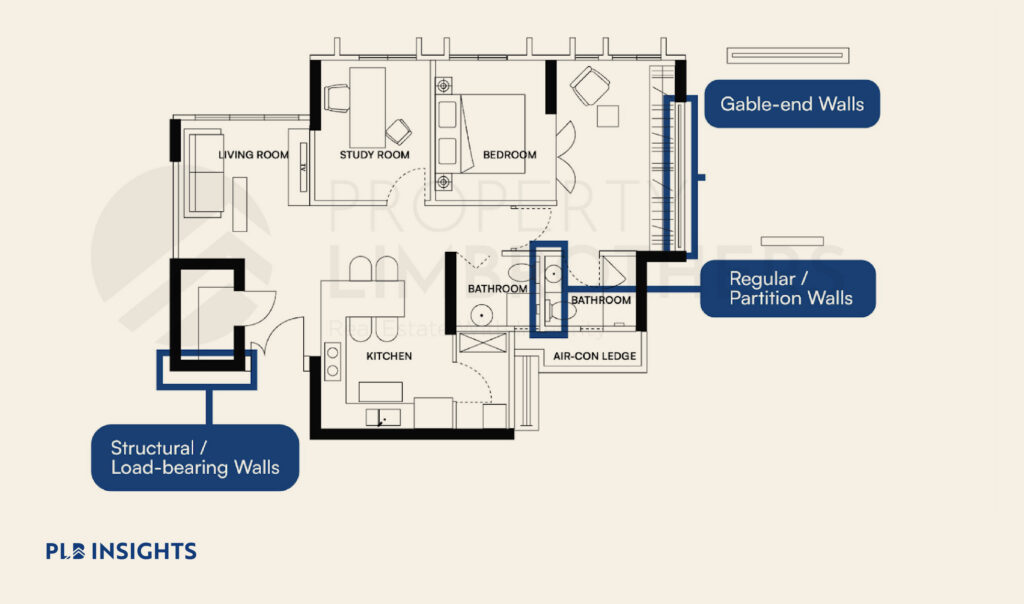
Three types of walls can be found on a floor plan, namely, standard, structural, and gable-end. The walls are represented by solid lines on a floor plan.
Standard, or regular, walls are straight and thin lines that can look like narrow rectangles separating the various rooms from other spaces in a unit.
Structural walls are represented as bold, black lines surrounding the unit. These walls provide all of the crucial support and stability to the unit’s structure, and cannot be demolished. Structural walls are designed to carry the weight of the different structural elements of a home including the roof and floors.
Gable-end walls are typically found in corner units and are represented as narrow rectangles with another rectangle inside. These walls are external and have the sole purpose of keeping the heat from the sun away.
Doors
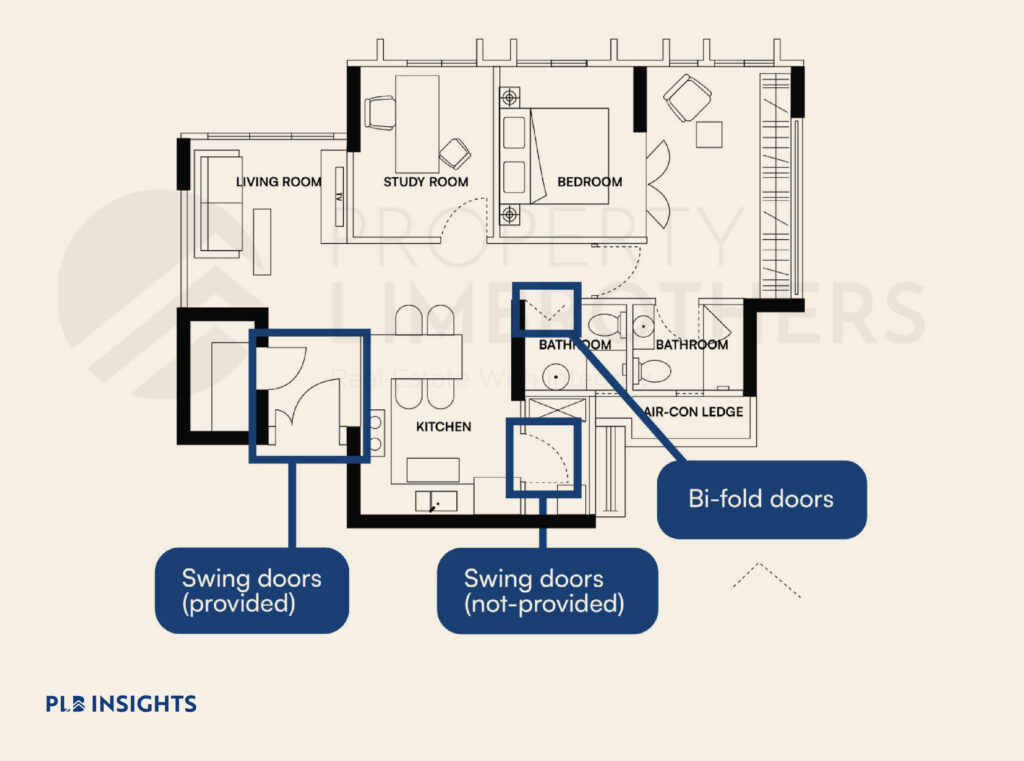
A floor plan depicts two types of doors, depending on the unit, folding doors and swing doors.
Both door types are represented either by solid or dashed lines, depending on whether the doors are already provided in the flat or need to be fitted out with a door later on. Folding doors are depicted as V-shaped, whereas swing doors are depicted as a rounded-wedge shape.
Windows
Windows are depicted differently based on the type they are. HDB flats and condos can come with different types of windows such as top-hung, casement, and sliding.
Top-hung windows are typically built in bathrooms and are represented by short dashed lines inside rectangles. Knowing if there is a provision for windows in the bathrooms may be essential for individuals who prefer natural ventilation over a ventilation fan.

Casement windows are illustrated as three horizontal lines parallel to one another within a rectangle. Additionally, they also have a rounded-wedge shape to indicate that they swing open. These windows are hinged at the sides and open outward. One quick tip on using the casement windows as a measuring tool is that it will immediately give you an estimated gauge on the width of the unit. More windows in a particular room equals a wider room.
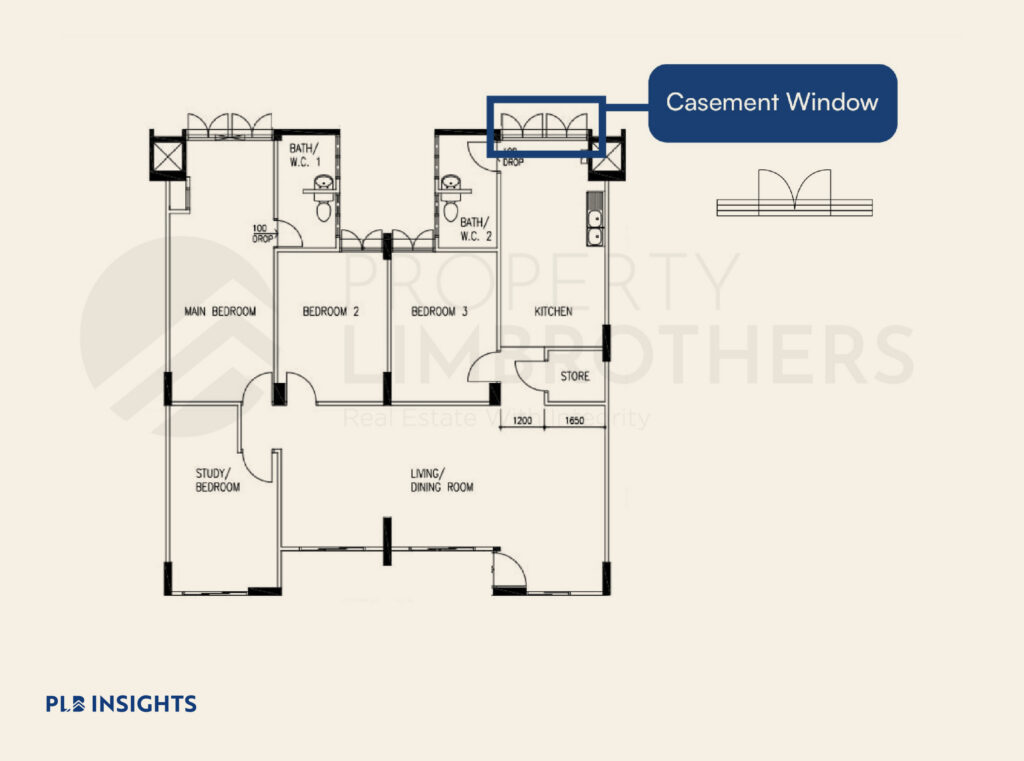
Sliding windows are shown as horizontal, alternating rectangular boxes to showcase how these windows slide open and close horizontally. Depending on a matter of preference, some may prefer sliding windows as they can be easier to open and close. But for those that prefer having a better level of ventilation, casement windows can be fully opened within the window frame.

Stairs
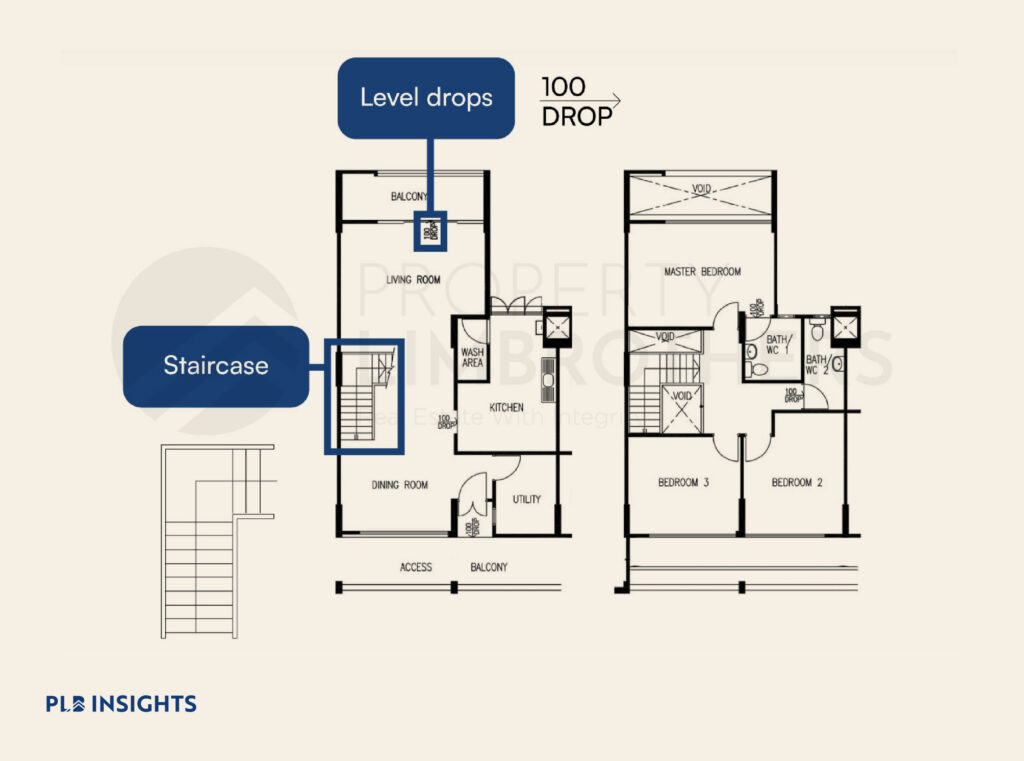
In larger units such as HDB Maisonettes and duplex condos, you can find the symbol for stairways in floor plans as well. Stairs are depicted as ladders, with a set of parallel lines.
Void Areas
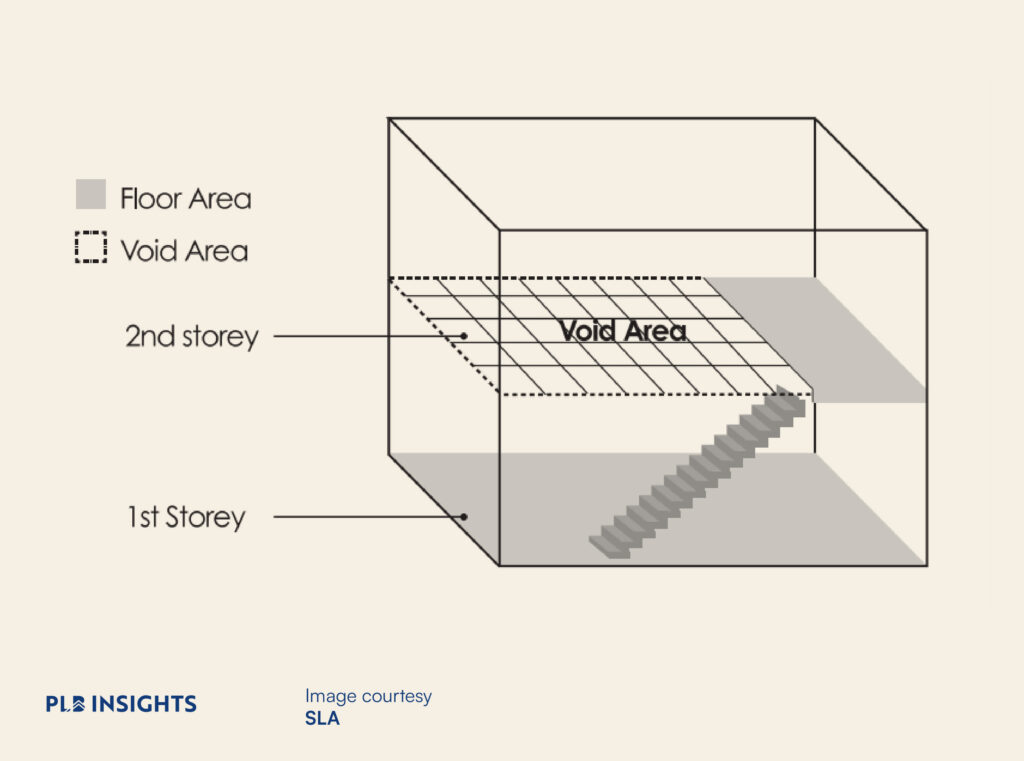
Void areas, or strata void areas, are the empty spaces in between the floor and ceiling. These areas are generally designed to enhance natural lighting and create a spatial and visual link between levels of the building. Void areas are either depicted as crossed, dashed lines within a box, or small squares within a box.
It is key to note that, as of June 2023, 4 different government agencies adopted a harmonised definition of floor areas. With this, the Urban Redevelopment Authority (URA), Singapore Land Authority (SLA), Singapore Civil Defence Force (SCDF), and the Building and Construction Authority (BCA) all agreed upon a definition of floor area where void areas are no longer considered a part of the GFA.
Letters and Abbreviations
Letters and abbreviations, apart from symbols, are also commonly used in floor plans to help buyers and sellers identify the different rooms, spaces and architectural features in a property. Some common abbreviations found in the floor plans of properties in Singapore include the following:

The bedrooms, kitchen and living rooms are typically fully spelled out, however, in the case that they are not, these are the abbreviations that are used.
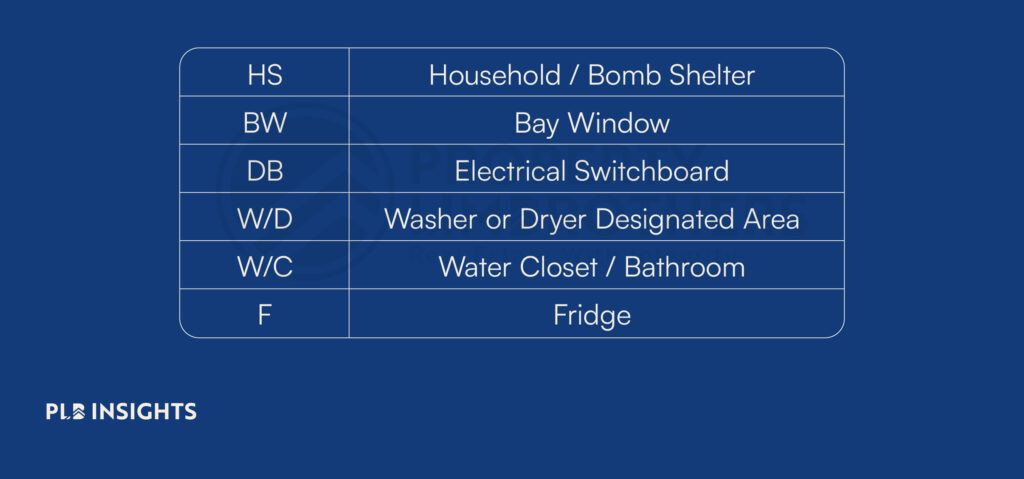
Measurements and Scale
Measurements and scale are an essential part of a floor plan as they provide the dimensions and proportions of a property, along with the spatial relationship within the property.
The scale of a floor plan highlights the ratio of the measurements on the floor plan and the actual dimensions of the property. This enables individuals to understand the layout and size of the rooms, walls, and other spaces in the property clearly. For instance, the floor plan scale of an HDB unit is typically 1:100.
In addition to this ratio, there are numbers that can be found lined up around the corners of a floor plan. These numbers are the wall and floor length, and are measured in square metres or square feet. However, for the most accurate measurements, it will still be best to physically measure the distances in the home as there may be minor measurement allowances/errors between the floor plan and the actual home. So if there is any renovation work that needs to be done, your interior design professional should be able to advise further on this matter.
Interpreting a Floor Plan
Effectively interpreting a floor plan can empower homebuyers to make informed decisions about their property investments and living spaces in Singapore.
Through all of these different elements and aspects of a floor plan, homebuyers can get a comprehensive visual representation of the units they are considering. They get a visualisation of the place’s spatial organisation, key features and the overall layout.
Through the different symbols and abbreviations that highlight the different rooms and components of a home, buyers can interpret their unit’s floor plan. Moreover, interpreting a floor plan also requires paying close attention to the scale, which provides information on the proportions and dimensions of the property.
Common Floor Plan Layouts in Singapore
Some common layouts of floor plans found in Singapore are those of HDB units, condominium units, and various landed properties.
HDB
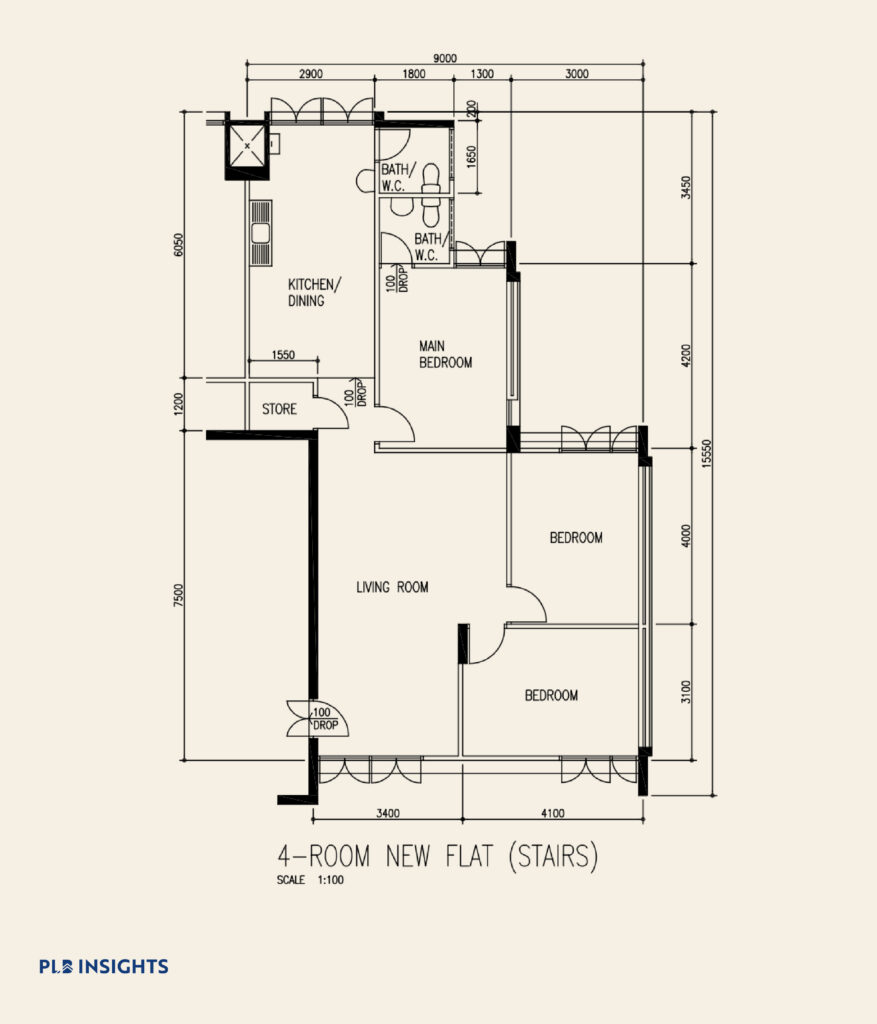
In this example of a 4-bedroom HDB flat, we can clearly visualise the different rooms as they are all labelled according to the legend of a floor plan. In addition to the bedrooms, kitchen, and living room, there is also a storage area to the left of the living room. Moreover, the swinging doors and casement windows, highlighted by their solid-lined curve, are provided for by the HDB.
Condominium
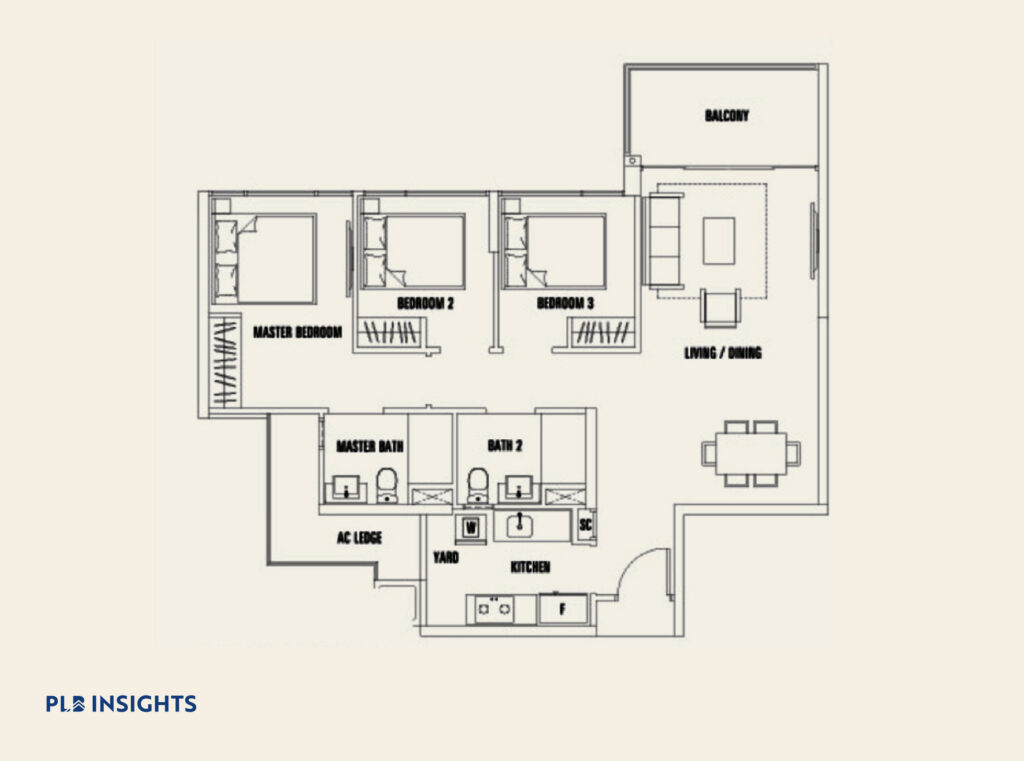
This is an example of a 3-bedroom condominium unit with distinct dining and living areas, along with a balcony. As we walk into the entrance of the unit, towards the left we can first see the kitchen and yard. Walking a little further, the floor plan highlights the living and dining area on the right and the corridor with the three bedrooms and two bathrooms on the left.
Closing Thoughts
We hope this article has provided you with valuable insights.
Understanding how to read a floor plan is a valuable skill for all individuals navigating the property market in Singapore. A floor plan serves as the visual representation of a property and illustrates its layout, design, dimensions and spatial organisation. This allows prospective buyers and sellers to gain a comprehensive understanding of a property’s overall design and various elements present.
Recognising the presence of elements such as void areas, structural walls and key amenities along with different letters and abbreviations, on a floor plan’s legend further allows individuals to assess the property and its desirability in order to make well-informed decisions on their property journey.
Are you currently examining various floor plans in pursuit of your dream home? If you’re ready to embark on the next phase of your property journey, don’t hesitate to reach out to us here for expert guidance. Our dedicated consultants are eager to assist you.
If you enjoyed this article, and are interested in learning more about the property market in Singapore, explore more of our insightful content at Insights by PLB.







